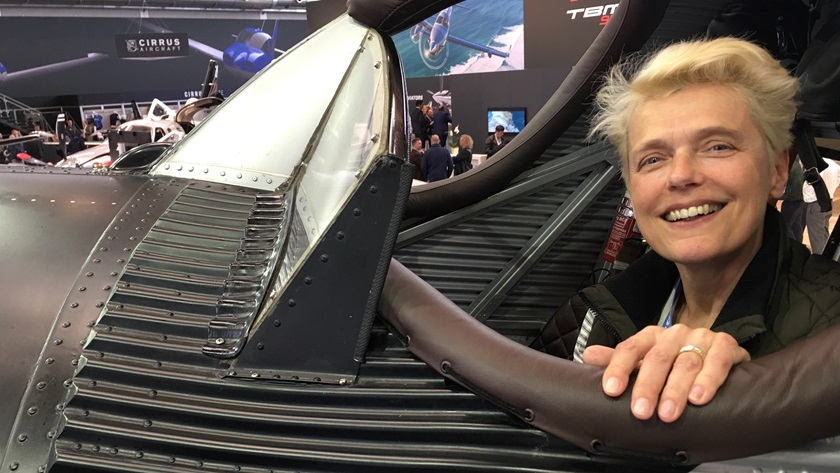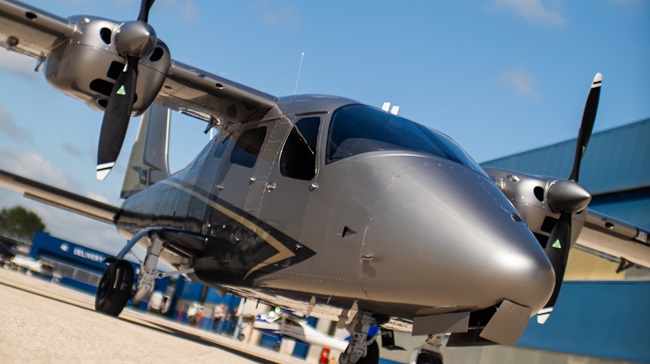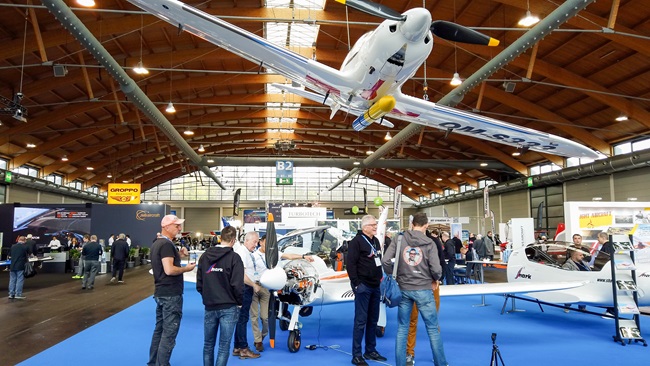The 'new' Junkers F 13
Retro splendor stands out
Modern electric airplanes and drones are practically everywhere at Germany's Aero Friedrichshafen, so the stately and decidedly retro Junkers F 13 covered with corrugated gray duralumin stands out. The century-old design is no museum piece, and not just here for nostalgia.
Conceived in 1918 by Hugo Junkers in Dessau, Germany, the F 13 taildragger was the first all-metal passenger aircraft used exclusively for civil aviation.
Casual visitors might assume this one to be a perfect restoration, but it’s not. It’s brand-new and the fruit of Dieter Morszeck's labor of love. He's the erstwhile owner of Rimowa GmbH, the famed baggage manufacturer. He’d always had a special fondness for Junkers’ aircraft, and his father had produced the first travel case made of duralumin, the corrugated material Junkers used for his airplanes. So when the idea of a flyable reconstruction was floated in 2013, he bit. However, he soon found out that there were only few remaining engineering drawings on which to base a reconstruction, and what existed was damaged and incomplete. How to proceed? Further research revealed that there was an engineless F 13 in a museum in Le Bourget, France. With the permission of the curator, this aircraft was painstakingly disassembled and laser-scanned, and the reconstruction proceeded on the basis of the derived blueprints.
Fast forward several years, and in 2018 HB-RIM, Junkers Flugzeugwerke AG, obtained type certification and is presently touring Europe, where we met it at Aero. I talked to Thomas Schüttoff, head of European sales, about the progress and range of the project, and he emphasized how everyone involved in it was and is very passionate. He said, “it’s not just Dieter’s vision. Dominik Kaelin’s employees, who couldn’t be further removed from Junkers’ era have been sticking with it over the years and are just as inspired.” Schüttoff himself can only be described as being in love with HB-RIM.
I’d been looking forward to getting into the aircraft, so Peter Bowers, president of Waco Classic Aircraft (which has been acquired by Morszeck and exhibited with the Junkers), showed me the ropes, or better, steps. A ladder helped me onto the huge wing, and tiny steps got me through the door into the cabin, where four passengers can sit comfortably opposite each other in roomy leather upholstery. But I really wanted to get into the two-seat cockpit, which is separated from the cabin by a window and, quite unlike the cabin, is open to the air. Therefore, it can’t be accessed through the cabin—and it also does not have an outside door. So back on the wing I went.
Bowers showed me a small recessed step where I put my foot and swung the rest of my body into the snugly fitting pilot’s bucket seat. At 10 feet, 2 inches above the show floor, I felt like the Queen of the Hill! Bowers explained that the pilot and—at the time the oiler, now probably another passenger—were somewhat protected by the front windows, but that it was essential to their decision-making to literally be exposed to the elements. Morszeck had a different take. "Remember cars in those days. The chauffeur sat up front in the open and the passengers were protected in the back. It was a thing,” he said. Today, as a nod to modern times, the instrument panel is equipped with a primary flight display, as well as a multifunction display, modern radio equipment, a transponder, and engine controls, but the wind is still in the pilot’s face.
The HB-RIM is truly spectacular. Morszeck’s dream has become a flyable reality, and his team’s enthusiasm is infectious and justified. They brought back to life a bit of old-time flavor and retro style; flying in this aircraft is an incomparable treat for the lucky pilot and passengers.
The company plans to show the aircraft at EAA AirVenture 2020. It has not been decided whether it’s going to be shipped in a container or flown across the Atlantic Ocean with extra fuel bladders. First dibs on the copilot’s seat!




